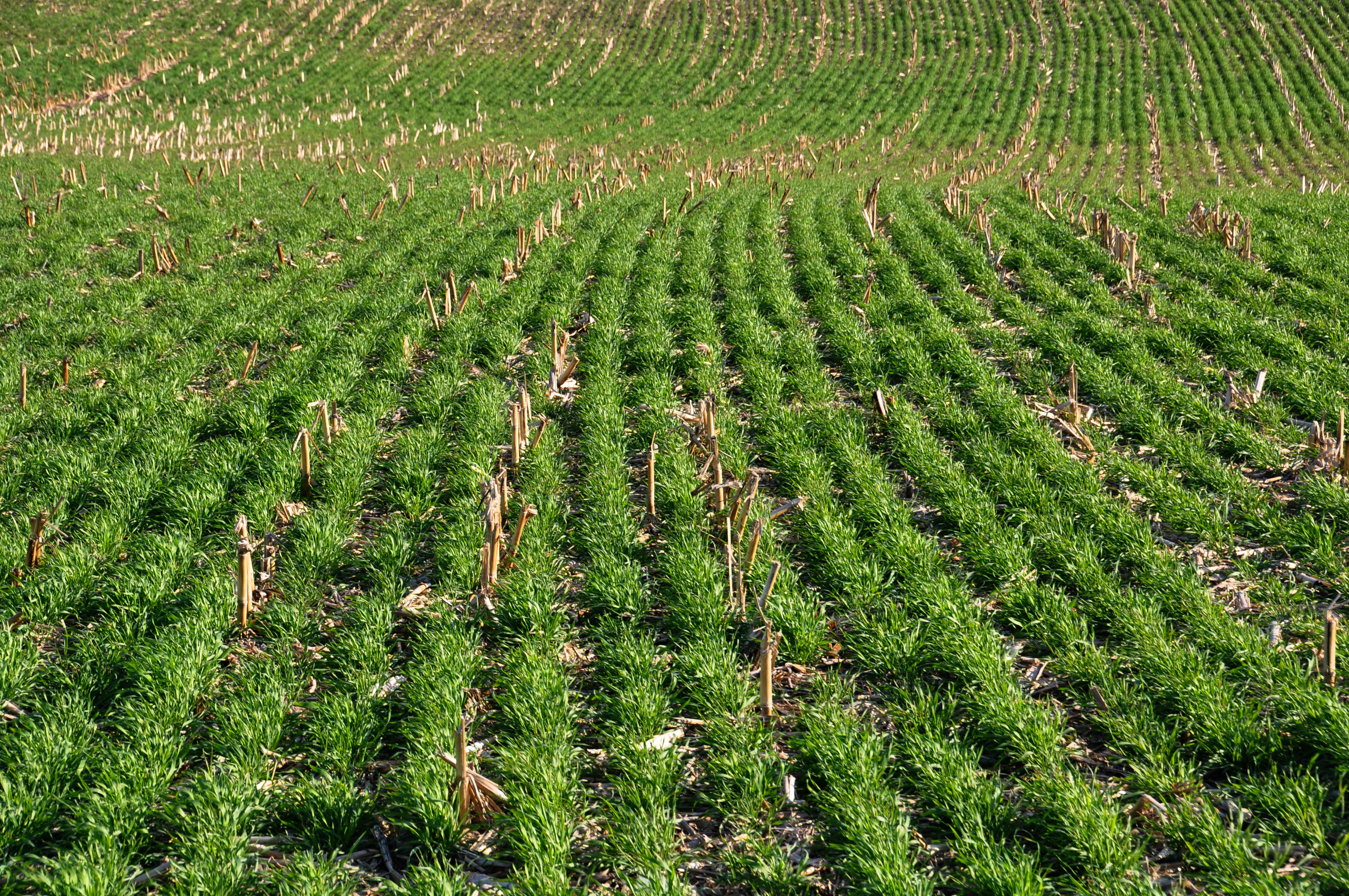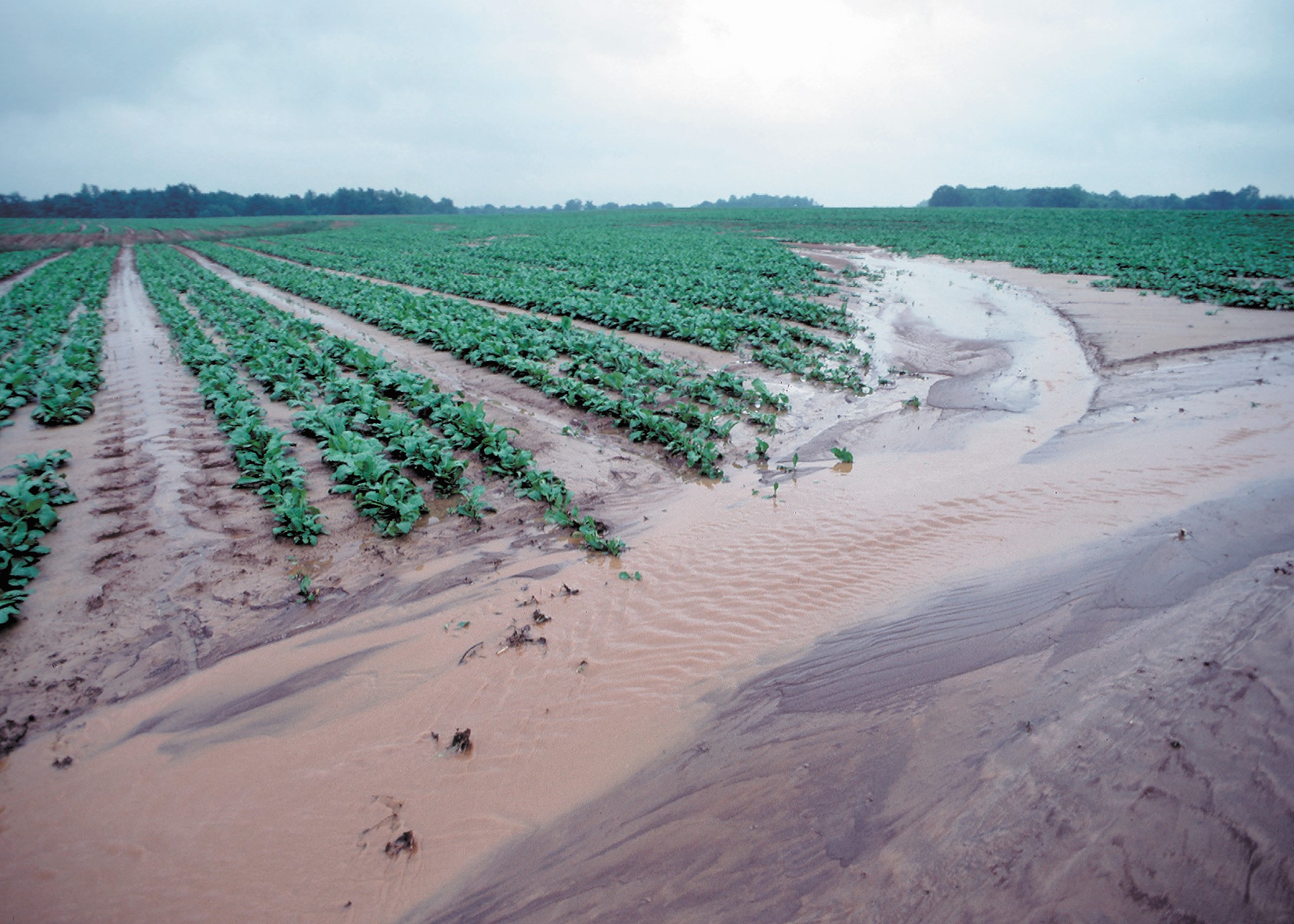Nestled in the heart of Illinois farm country sits Lake Decatur, a drinking water reservoir and recreation destination that had a big problem.
The lake was created when the city of Decatur dammed the Sangamon River in 1922 to store water for local businesses and residents. Today, the reservoir supplies water to more than 90,000 people. Industry, including two large grain mills, accounts for 75 percent of lake water usage. Archer Daniels Midland is the largest single water user – and the city’s largest employer.
With about 3,000 acres of water, Lake Decatur is a popular boating destination and boasts an impressive fishery. White bass and walleye are abundant and anglers report catching flathead catfish as large as 60 pounds. Boating, fishing, and lake-side parks have made Lake Decatur the centerpiece of the area’s recreation economy. But a problem lurked just under the surface: Lake Decatur was filling up with sediment.
As early as 1947, state agencies identified soil erosion from corn and soybean fields up-river as the primary source of sediment filling the lake, which had already lost one-quarter of its water-holding capacity. Despite dredging one section of the lake in the 1990s, sediment filled 45 percent of the lake by 2001. Dredging in another part of the lake was completed in 2011.
Then came the drought of 2012 – one of the worst on record.
The Sangamon River dried up for 16 days. Water levels in Lake Decatur dropped almost 50 percent, according to the Herald & Review. Supplemental water sources were limited due to a drought the previous year, and the city was forced to institute the most stringent water restrictions in its history. Car washes closed, lawns withered, and landscaping businesses suffered. Nuclear power plants reduced their output due to the shortage of cooling water. City leaders agreed: they needed a better way to cope with future droughts.
City residents paid for the $92 million project through their water rates, which more than doubled.
In 2014, the city approved a plan to dredge the rest of Lake Decatur, restoring its capacity to store water during wet times. The plan included adding two new sediment traps upstream and cleaning out an existing trap to slow the flow of sediment back into the lake. City residents paid for the $92 million project through their water rates, which more than doubled. The dredging was completed in December 2018.
“It was one of the largest projects the city of Decatur has ever done,” says Joe Nihiser, lake maintenance supervisor for Decatur’s Public Works Department. More than 11 million cubic yards of sediment were dredged out of the reservoir. “It increased our storage capacity by about 54 days,” Nihiser says, or about 30 percent. The sediment traps will help city officials monitor the sediment load coming into the reservoir from up-river, and they can use dredges to clean out the traps when needed rather than having to dredge the whole reservoir.
It was an expensive solution for an ongoing problem.
It was an expensive solution for an ongoing problem: the sediment filling the lake was running off of some of America’s richest farmland. According to the U.S. Department of Agriculture, erosion from cropland in the region averages over one ton of soil lost per year from each acre.
Community leaders in Decatur are focusing on the source of their sediment problem. Nihiser says city agencies are working with the Lake Decatur Watershed Program and local soil and water conservation districts to help farmers pay for grass waterways, terraces, and other practices that reduce erosion. “Farmers don’t want their soil to run off,” says Nihiser. “With the conservation practices, it’s helping our waters and our waterways.”
Conservation practices can boost production by keeping soil on the farm – and boost farmers’ bottom lines.

Conserving Soil on Farms
Upstream from Decatur, the Champaign County Soil & Water Conservation District board saw the need to educate farmers about conservation systems that reduce soil erosion and the runoff of nitrogen, phosphorus, and other pollutants from cropland. The conservation district created Saving Tomorrow’s Agriculture Resources (STAR) – a free tool to help farmers assess their conservation practices on individual farm fields.
With the voluntary STAR tool, farmers can see how their conservation system compares with best practices. The conservation district uses the tool to show farmers better conservation practices they can put in place. Launched in 2017, STAR has already spread to 41 Illinois counties, and conservation districts and farm organizations in other states are adapting it for use elsewhere.
The 2012 drought that exposed Decatur’s need to improve its water supply also showed farmers like David Brown the advantages of some of those conservation practices. Brown farms 4,000 acres near Decatur with his son, Chase, and brother, Joe. The drought substantially reduced the amount of corn, soybeans, and forage they were able to grow that summer and drove up the price of grain they would need to buy to feed their cattle.
Cover crops can reduce soil erosion by half or more. They also help reduce the runoff of nitrogen and phosphorus pollution from cropland by 30 percent or more.
Brown had been reading about cover crops and the family decided to take a chance on them, planting a mix of radishes, rye, and clover in late summer. The practice is called a “cover crop” because the plants cover the bare soil over the winter after an annual crop is harvested. In the Browns’ case, the mixture grew thanks to some timely rain and provided food for their cattle for most of the winter. But the Browns noticed that the cover crop also helped improve their soil. They experimented with more cover crops and joined the Soil Health Partnership to help test conservation practices and communicate the results to other farmers.
The results can be impressive. Cover crops can reduce soil erosion by half or more. They also help reduce the runoff of nitrogen and phosphorus pollution from cropland by 30 percent or more, according to the University of Illinois.
Despite these results, farmers like the Browns are still a small minority. Cover crops represent just 3 percent of Illinois cropland, according to the U.S. Department of Agriculture’s 2017 Census of Agriculture. They can cost $30 an acre to plant, and the benefits in reduced soil erosion and improved soil health are not always immediately apparent.
Conservation programs provided by the U.S. Department of Agriculture and a growing number of states can reimburse farmers for a share of the cost of planting cover crops and other conservation practices. For example, the Illinois Department of Agriculture will implement a pilot program in 2020 to test a $5/acre discount on crop insurance for farmers using cover crops. Illinois is also part of a state- federal partnership that may soon be paying farmers to plant buffer strips along streams to reduce runoff. The League put soil health at the center of our work on the 2018 Farm Bill, supporting programs like these that help family farmers adopt conservation cropping systems. A 2018 League report explained the benefits that cover crops and other conservation practices provide for fish and wildlife, soil health, and improved water quality
The League is working in Illinois and other states to promote voluntary efforts like the STAR program and funding for state programs that help farmers plant cover crops, install buffer strips along streams, and restore wetlands that filter runoff. A recent League report highlighted the growing number of state and local soil health initiatives seeking to educate and assist farmers and ranchers who want to adopt new conservation practices.
The League is also helping residents and local officials better understand their water quality problems. The League recently trained volunteers in Decatur, Geneseo, and Peoria, Illinois, to monitor and assess local streams using the League’s Save Our Streams (SOS) program. By monitoring the sediment load and health of rural streams, volunteers can provide new information on tributaries like those upstream from Lake Decatur. The League is growing its capacity to engage volunteer water monitors in the Corn Belt and beyond.

Healthy Soil, Healthy Water
Runoff of soil, nutrients, and other pollutants from farms and livestock operations is not just an Illinois problem – it is a nationwide problem. Polluted runoff from farms and ranches is the biggest threat to water quality in America’s streams and lakes today.
For Dr. Ray Weil, the sediment and other pollution in our waters is a symptom of how we treat our soils. A professor of soil science at the University of Maryland, Weil co-authored The Nature and Property of Soils, a classic textbook on soil health used around the world.
“Everything having to do with water starts with soil,” says Weil. “If you think about it, very little of the water in a river or a lake got there by rain falling directly into the river – most of that water got there by rain falling on the land. If the soils are healthy, you almost never get surface runoff. Instead, you get all the rain soaking in.” But when soils are degraded, rainfall runs off – carrying soil along with nitrogen, phosphorus, and bacteria into our streams and rivers.
Dr. David Montgomery, author of Dirt: The Erosion of Civilizations and Growing a Revolution, says American agriculture’s reliance on plows, chemical fertilizers, and growing just one or two crops year after year have degraded our soils. “America’s soils have lost about half their organic matter since colonial times,” he says. Soil continues to erode faster than nature can replace it, which has consequences beyond polluting rivers and filling up reservoirs.
“By 1980, roughly one-third of the carbon humanity had added to the atmosphere since the Industrial Revolution had come from plowing up the world’s soils,” says Montgomery. As the world struggles to feed a population expected to grow to over 10 billion by 2055, it will be doing so with less and less topsoil – unless things change.
Weil and Montgomery both emphasize that the changes needed in agriculture are clear, and that farmers and ranchers who put healthy soil at the center of their operations can maintain production while reducing costs and growing net income. Fortunately, as farmers like David and Chase Brown are showing, there are effective solutions that can keep soil and nutrients on the farm – and make farms more profitable.
Montgomery warns about the consequences of failing to make such changes. From ancient Rome to modern times, “societies that didn’t take care of their land didn’t last,” he says. “I think we can make this shift, but we don’t have forever.”